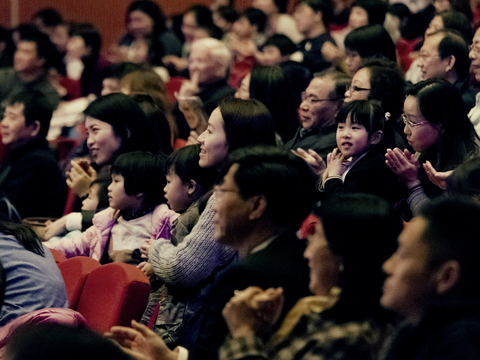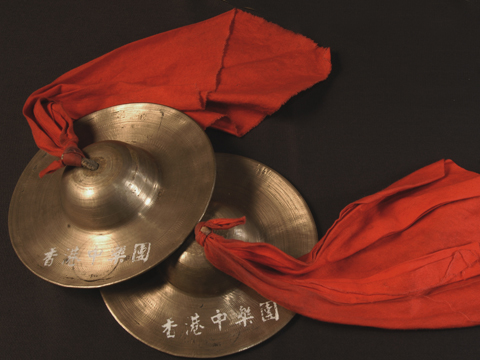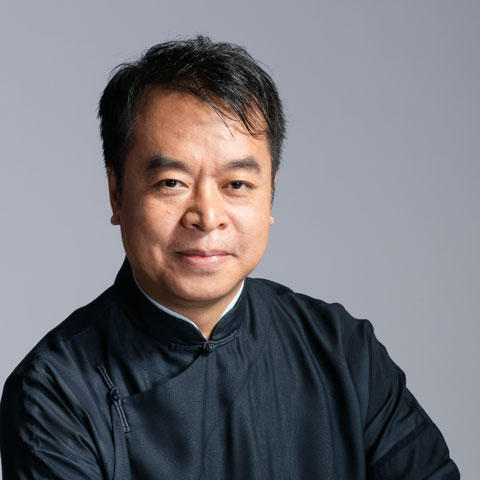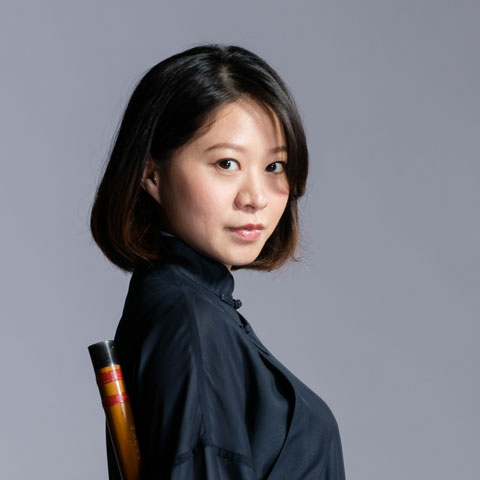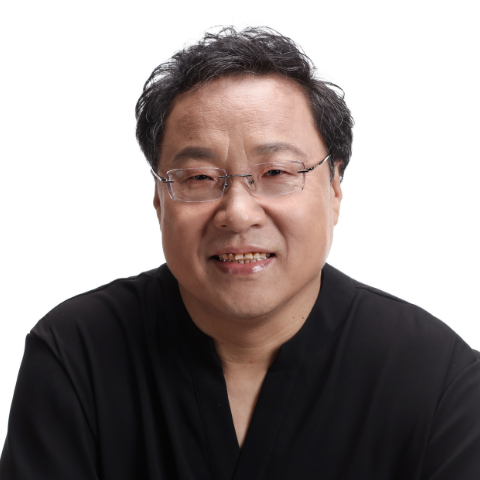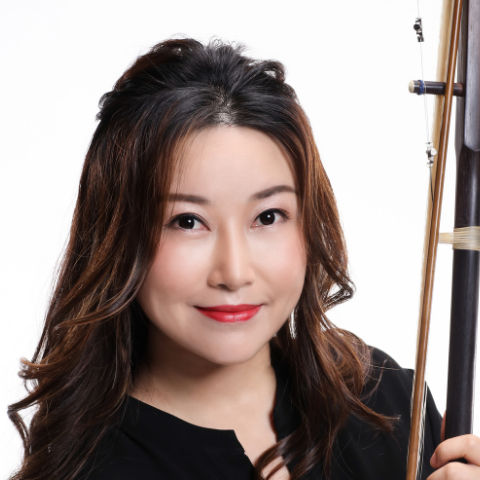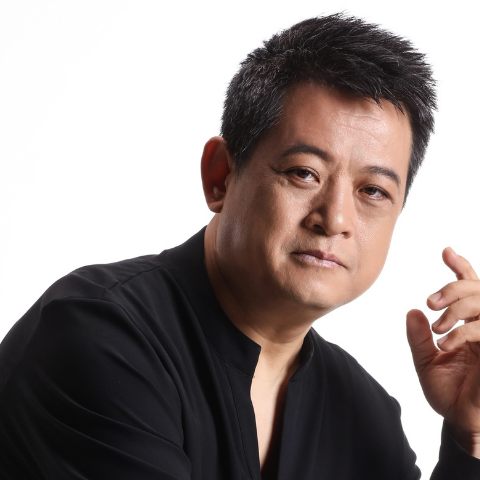
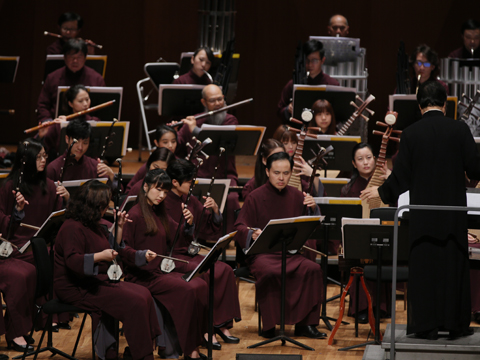
HKCO
Hong Kong Chinese Orchestra Environmental, Social and Governance Artistic Director and Principal Conductor for Life Orchestra Members Council Advisors & Artistic Advisors Council Members Management Team Vacancy Contact Us (Tel: 3185 1600)


Concerts


Education
The HKCO Orchestral Academy Hong Kong Youth Zheng Ensemble Hong Kong Young Chinese Orchestra Music Courses Chinese Music Conducting 賽馬會中國音樂教育及推廣計劃 Chinese Music Talent Training Scheme HKJC Chinese Music 360 The International Drum Graded Exam


Instrument R&D
Eco-Huqins Chinese Instruments Standard Orchestra Instrument Range Chart and Page Format of the Full Score Configuration of the Orchestra
39th Orchestral Season
39th Orchestral Season

Music of Character
8:00pm
Other-worldly sounds
The wide range of Chinese instruments includes not only those from the Han of the Central Plains, but also those from ethnic minorities of more obscure regions. That is why Chinese folk instrumental music is so full of character. This is a concert to showcase the various types of folk instruments that are less familiar to the frequent concert-goer. They include the bass gehu, shuangguan, xun, rewap, aijik, sompoton etc. Conducted by Chew Hee-chiat, Resident Conductor of the HKCO, will transport you to the idyllic lands of high mountains and obscure valleys of China.
Chow Fan-fu
Unique tonalities
In this concert titled‘Music of Character’, there are many Chinese musical instruments seldom heard on the concert stage. They include the bass gehu, shuangguan, xun, yamudi, koudi, bawu, rewap and aijik, as well as the sompoton of the Kadazan-Dusun tribe of Sabah, Borneo. They are outside of the regular configurations of the Chinese orchestra, and constitute a very small part of the spectrum of instruments coming from China. Just as the title of the concert suggests, they are so distinguished in character that they cannot join the orchestral family.
The Western philharmonic orchestra has evolved over a period of two or three hundred years before it settled into the form that we know today. Instruments picked are out of consideration for the affinity of sounds and uniformity in performance, both of which are conducive to harmonious effects. One of the main reasons for plucked-string instruments being excluded from the Western philharmonic orchestra is that its notes are granular, and it is difficult to achieve uniformity. Yet on the other hand, there are many plucked-string instruments in Chinese music. They are recognized for their expressiveness and it is therefore understandable why they are brought into the Chinese orchestra as a regular constituent.
Like human beings, musical instruments carry different traits that form their character. While human beings can be categorized according to their character (or personality), musical instruments cannot. The reason is that the unique tonality and character of an instrument can only exist within a certain range and certain conditions. When an instrument has several traits, it would be difficult to be classified.
‘Eight Sounds’ – classification by material used in making instruments
To classify musical instruments, we can of course do so by their ethnic background. But many instruments are common to a number of ethnic communities, and this makes such classification invalid.
A very popular method in the pastwas to differentiate by the materials used. This is the practice of the Western philharmonic orchestra, thus giving it‘strings’, ‘woodwind’, ‘brass’, and ‘percussion’. In China, the “eight sounds”, or the eight main groups of instruments, have traditionally been based on the materials used for the instruments: metal (for example the bells), stone (for example the qing and the bianzhong), strings (the qin and the se), bamboo (the xiao and the dizi), gourd (for example the yu and the sheng, which are built on the gourd), earth (extended to mean pottery) (for example the xun and the fou), leather (for example the leigu drums), and wood (for example the zhu, the yu and other percussion instruments).
Such classification by material, however, is not scientific, because as technology and craftsmanship develop, the evolution of musical instruments has varied the materials used. The most typical examples are the flute and the piccolo in the Western philharmonic orchestra, which have ceased to be made of wood a long time ago. At the same time, such classification by material cannot be applied to instruments outside of the conventional philharmonic orchestra. For example, the saxophone, much used in jazz music, has never been made of wood from the day it was first invented. The pianoforte, known to be the ‘king of the instruments’, is sounded through the striking of strings with hammers, so is it a string instrument, or a percussion instrument?
‘Blown’, ‘plucked’, ‘bowed’ or ‘hammered’?
Another mode of classification exists in the Chinese orchestra, where differentiation is by means of the mode of performance, that is, whether they are blown (wind), plucked, bowed or hammered (percussive) instruments. These four are the classification used in A Dictionary of Chinese Music published by the People’s Music Publishing House, and the entries number over three hundred. But how many are used in a Chinese orchestra? Even for a full-scale group like the Hong Kong Chinese Orchestra, the types of Chinese ethnic instruments used for configuration, including the more commonly used percussion pieces, are less than forty.
But modern composers have been employing techniques and stylistic devices to encourage breakthrough in the mode of performance on various instruments, and there is a growing number of compositions which enable different instruments to show their versatility and possibilities. Therefore, the classification by traditional use is also subject to challenges for being unscientific. Without going so far as to apply it to other cultural systems, the Chinese classification methodology already shows its inadequacy when applied to modes of performance outside of the four traditional genres, or to more than one mode of performance occurring on the same instrument!
The academic-scientific approach
Now the more scientific and academically accepted classification is a system that differentiates instruments according to how sound is produced on them. This was first put forward by the famous Austrian musicologist, Erich M von Hornbostel (1877 – 1935) and the German-American musicologist, Curt Sachs (1881 – 1959), in a thesis entitled The Classification of Musical Instruments which they published in 1914. The thesis suggests that, on the basis of how sound is produced, musical instruments can be classified into four groups: the idiophones, the membranophones, the chordophones and the aerophones. This classification is applicable to instruments from all parts of the world and used by different peoples, and is now a standard system for research. In the world of learning, the classification has been named after its two proponents, hence the title Hornbostel-Sachs.
The classification of musical instruments according to the way sound is produced on them is scientific and affirmed in the realm of academic research. But then although the system has been in use for over a century now, it is hardly used to make it popular and accessible to the public. Even among music aficionados, who would already have a reasonable understanding of music, classification is still either by the Western methodology of ‘strings’, ‘(wood)wind’, ‘brass’ and ‘percussion’, or by the Chinese methodology of ‘blown’, ‘plucked’, ‘bowed’ and ‘hammered’. The ‘instruments of character’ that appear in this concert remind us once again that the world of musical instruments is just too enormous to enumerate, and what we see in an orchestra constitutes only a miniscule number of the whole.
Your Support
Friends of HKCO
Copyright © 2025 HKCO

